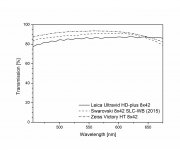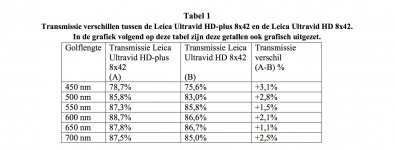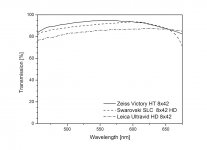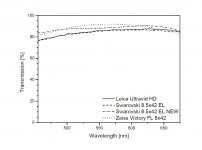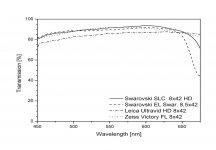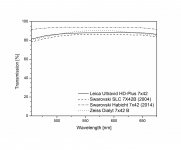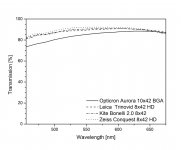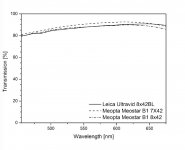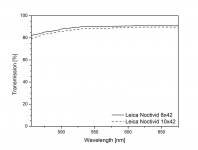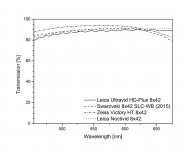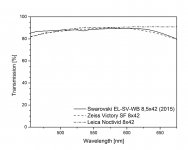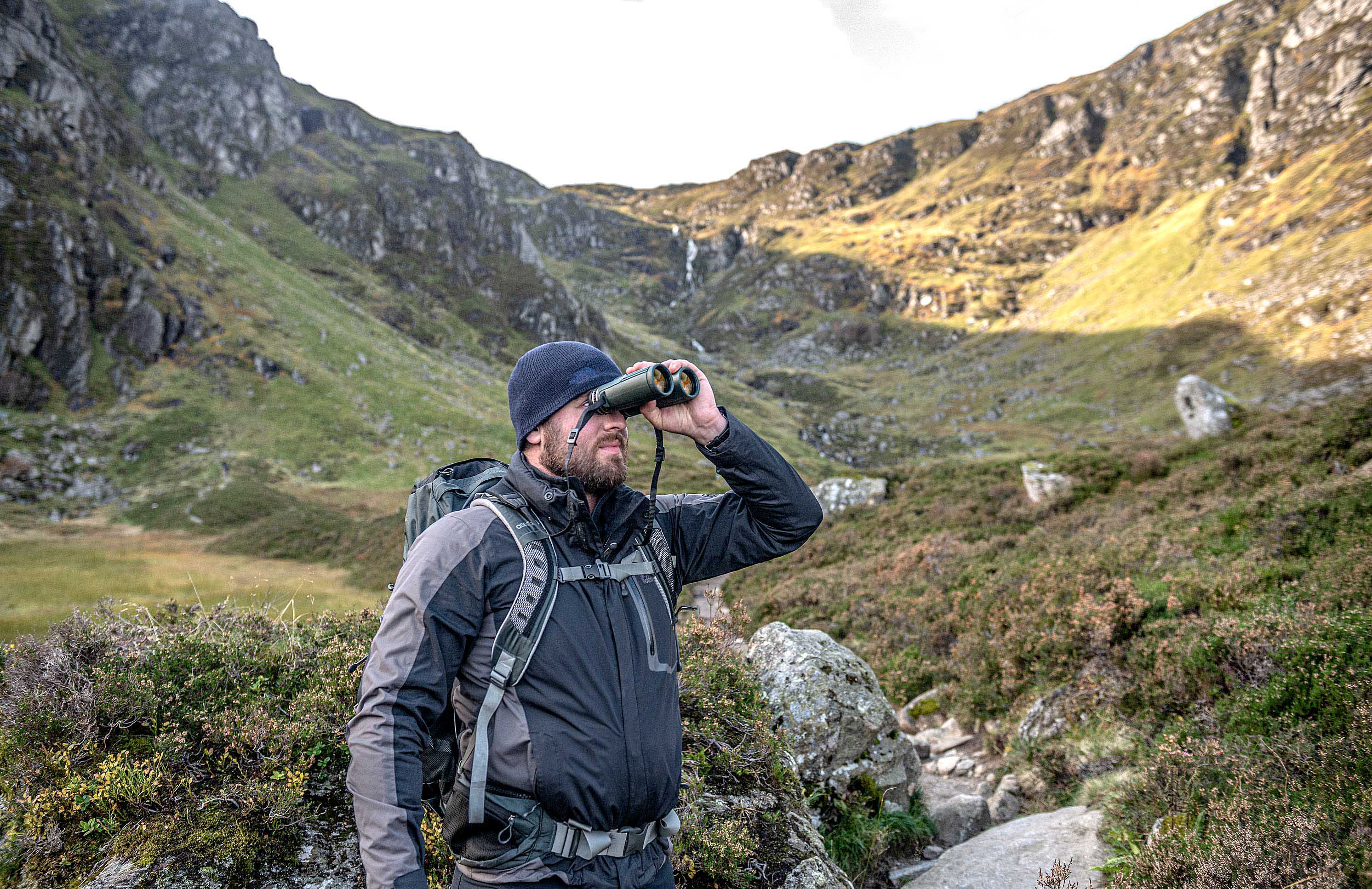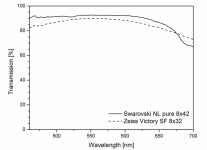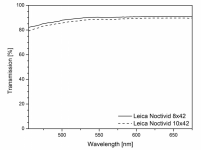The amount of transmission only tells us something about brightness and the shape of the curves is informative about the predominant color distribution. The Noctivids have a fairly flat transmission curve over a wide wavelenght range, but it is gradually declining from red to blue, giving it its saturated image impression due to the slightly higher red transmission. The transmission curves of the Swarovski NL pure are almost flat over a wide wavelenght range giving the binoculars such a bright image impression while yielding an almost perfect color representation.
Gijs van Ginkel
Hello Giis van Ginkel,
how do you measure transmission curves over a wide range of wavelengths? A narrow bar of light of different wavelengths sent in small areas around the optical axis - or over the entire lens surface or angle of view?
A few remarks with facts about it - whether these only contain a correlation or a causality, I do not know:
Own experiences and tests:
A Hawke Frontier EDX 8x32 clearly shows me more color saturation (subjectively more intense perceived contrasts) than a Kowa BDII XD measured by you. I tested 3 units of this binocular against 2 units of Hawke Frontier EDX with the naked eye. Deciduous trees with remnants of brown autumn foliage against a completely overcast, light grey sky and brown-green contrasts of ground plants were displayed with higher contrast (with more saturated colors) in the Hawke, whereas the KOWA BDII XD was dull. A second observer noticed the same "dullness" in the Kowa - large apparent field of view with a duller image. Literally: "The Hawke is a pipe opposite the Kowa, but the Hawke has a far more beautiful, real colored image.
A direct comparison of both binoculars on and under a street lamp shows significantly brighter and longer spikes on the Kowa. Directly under the street lamp, just outside the field of view, the Kowa showed snow, rain - which did not exist. The Hawke did not. My conclusion is that the quality of the roof prisms is important.
I noticed regarding specs from manufacturers:
Hawke produces several series with the same specs, differences in optics are not explained in a technically comprehensible way, examples: Frontier HDX and EDX with the same specs.
All Frontier models feature Hawkes new H7 optics, offering stunning high definition viewing with incredible colour control and phase correction. High performance lens coatings and Dielectric Coated prisms ensure the highest level of light transmission. The all new Frontier APO offers extreme...

uk.hawkeoptics.com
Vortex apparently selects same roof prisms but with different qalities (different selections!) for different series, for more expensive series simply the better ones. I have to search for the link again, if the search is successful, I'll have to submit it later.
For now I draw the following conclusions for the facts:
The transmission of modern day binoculars, meanwhile > 85 percent already of mid-range binoculars, is practically irrelevant during the day. Users need color saturation and contrast within the animals and against the background for the observation and identification of plants and animals. It is not for nothing that Leica colors are popular.
A "dull" image (imho with little saturation and contrast) transmits less information to the user's brain in conjunction with his eyes. The details of plants and animals are less visible, and finding animals and plans against background is more difficult.
Measuring the transmission alone does not meet the requirements of nature observers during the day. Hunters now use binoculars with objective lens diameters up to 42 mm - brightness analogous to their riflescopes, for the raised hide the same (lightweight) day binoculars are sufficient in addition to thermal imaging cameras with rangefinder.
The measurement of highest transmission values is interesting for conventional hunters and nocturnal nature observers.
Day binoculars and night binoculars (easily distinguishable by their objective lens diameter/light gathering capacity) should differ in the emphasis or suppression of wavelengths at the edge of human perceivable wavelengths. Emphasis or supression on infrared or ultraviolet wavelength.
Links and sources I will search for in the next days ... if anyone is interested at all. ;-)
Best regards to all readers and writers - to Gijs van Ginkel for the facts. Jessie.
 7x42 UVHD+s and they had an old demo pair from 2015 as well as a 2019 pair. Something compelled me to look at the objectives side by side, and clearly they are different. Going off memory now, but I think the 2015s were more green and the 2019s, more blueish and subtle. Any knowledge or thoughts about this?
7x42 UVHD+s and they had an old demo pair from 2015 as well as a 2019 pair. Something compelled me to look at the objectives side by side, and clearly they are different. Going off memory now, but I think the 2015s were more green and the 2019s, more blueish and subtle. Any knowledge or thoughts about this?




